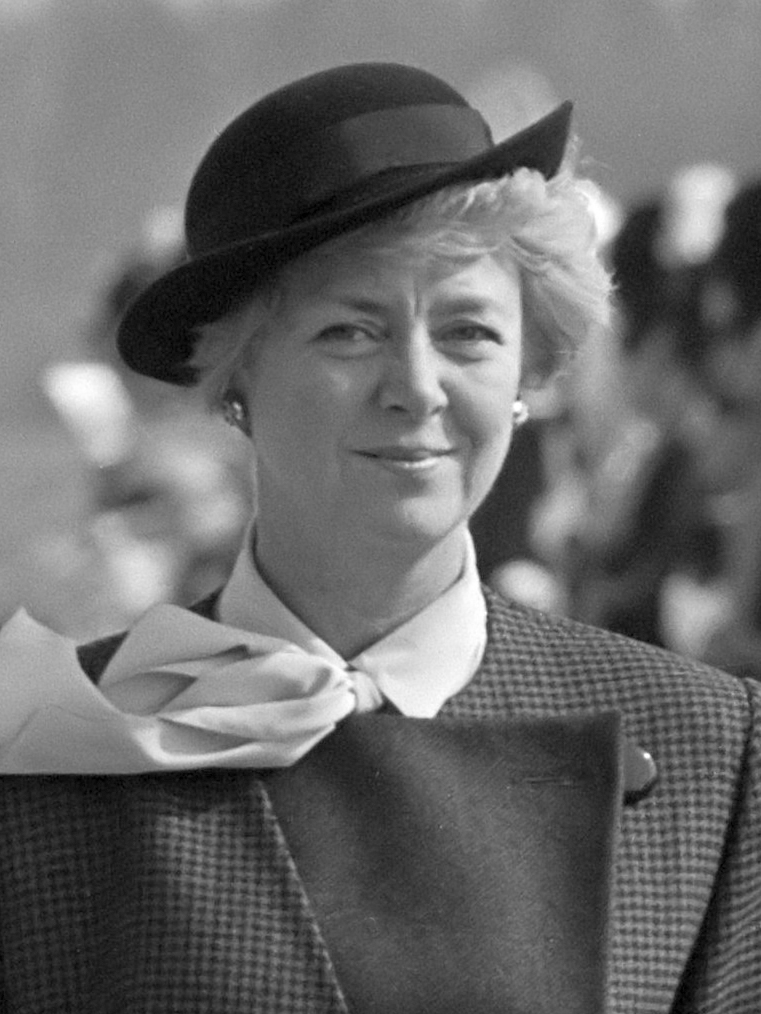Vigdís Finnbogadóttir, b. 1930
Vigdís Finnbogadóttir is an Icelandic politician. She served as the country’s president for 16 years, using the office to promote Icelandic culture around the world, amongst other things. Since her retirement, she has served on various international organizations, has campaigned for women’s rights, and been recognized for her work in Icelandic politics, language, and theater.

Vigdís Finnbogadóttir was born in Reykjavík, Iceland, on April 15, 1930. Her father was a professor at the Universtity of Iceland, and her mother was the Chairperson of the Icelandic Nurses Assocation. After graduating from high school, Finnbogadóttir lived in France, where she studied at the University of Grenoble and University of Paris. She returned to her home country to study at the University of Iceland before leaving again to complete her study of theatre at the University of Copenhagen.
Returning again to Iceland, Finnbogadóttir worked for the National Theatre of Iceland. She spent her summers organizing and leading tours for the Icelandic Tourist Bureau. She was particularly interested in sites of cultural, historical, or literary significance. This experience allowed her to promote the beauty and history of her country to international visitors.
Finnbogadóttir taught French for 11 years, first at Reykjavík Grammar School and then at Hamrahlíð College. She also taught French drama and theatre at the University of Iceland and had a television series on Iceland State Television from 1971 to 1972 on which she taught the French language. Finnbogadóttir was particularly interested in literature about theatre, and she helped found Gríma, an experimental theatre group, in 1962. By 1972, she had reached the position of Artistic Director at the Reykjavík Theatre Company.
First democratically elected female president
She was persuaded to run for the country’s presidency in 1980. There was a strong desire for a female leader for the nation, and Finnbogadóttir was well respected for her work in promoting Icelandic culture both at home and abroad. In the election, she finished first among the four candidates, collecting 33.8% of the vote. In doing so, she became the fourth President of Iceland and became the world’s first democratically elected female president. She served four terms, re-elected unopposed in 1984 and 1992, and with 92.7% of the vote in 1988. After 16 years in office, she retired from politics at the end of her term in 1996, having served the longest tenure in office of any female elected head of state.
As president, Finnbogadóttir emphasised the importance of caring for Iceland’s environment and children as well as Iceland’s cultural heritage. She made it clear that the Icelandic language was an essential part of the country’s identity, and she worked hard to protect and promote it. Her previous training in foreign languages was also beneficial in her role, as she was able to communicate effectively with world leaders while speaking on issues of national importance.
Since her presidency in 1996
Finnbogadóttir continues to use her position as former president to promote her country and speak out about helping vulnerable people and defending human rights. She helped found the Save the Children Association in Iceland, and she is active in protecting the country’s environment. Finnbogadóttir also serves as the head of the board of the Oslo Center for Peace and Human Rights and was the chair of the World Commission on the Ethics of Scientific Knowledge and Technology from 1999 to 2004.
She is the namesake for the Unviersity of Iceland’s Vigdís Finnbogadóttir Insitute of Foreign Languages and serves as a UNESCO Goodwill Ambassador for Languages. She works alongside other world leaders in the Club de Madrid, the largest forum of democratic former Presidents and Prime Ministers, and the Council of Women World Leaders.
Finnbogadóttir may have seemed like an unlikely candidate for the presidency in 1980, but she has gained and maintained the respect of her country through her determination to share Iceland’s culture and history with the world as well as her numerous charitable and international causes. She encourages girls to pursue their educational aspirations, hoping to use her story to demonstrate opportunities and possibilities for women.
Further reading:
- Inga Minelgaite Snaebjornsson, “‘President Vigdís’: The End and the Beginning of Women’s Agenda in Iceland.” Women Leaders in Chaotic Environments: Examinations of Leadership Using Complexity Theory (Cham, Switzerland: Springer International, 2016).
- Leigh Woods and Águsta Gunnarsdóttir, Public Selves, Political Stages (Amsterdam: Routledge, 1997).